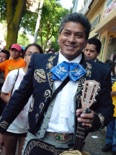the Center for Historic American Building Arts
ReVisioning New Jersey's Largest Historic District
31 West Commerce Street
Bridgeton, NJ 08302
English: 856-221-3276
Español: 856-221-3239
cell: 201-321-3813


![[chaba]](Ferracute_%26_Oberlin_Smith_files/shapeimage_3.png)




the Center for Historic American Building Arts
ReVisioning New Jersey's Largest Historic District
31 West Commerce Street
Bridgeton, NJ 08302
English: 856-221-3276
Español: 856-221-3239
cell: 201-321-3813






Oberlin Smith (b. 1840-1926) joined the American Society of Mechanical Engineers in 1881, virtually at its founding, and became its president in 1889 (serving 1890-91). He also helped found the IEEE (Institute of Electrical and Electronics Engineers). He was
New Jersey commissioner to the Pan-American Exposition in 1901, and a member of the New Jersey Department of Conservation and Development.
His career included such varied activities as membership in the National Geographic Society and Vice Presidency of the Men’s League for Women Suffrage. He died in Bridgeton 19 July 1926, and is buried
in the Broad Street Cemetery.
OBERLIN SMITH AND THE FERRACUTE MACHINE CO.
BEGINNINGS
The extraordinary enterprise that was to become the Ferracute Machine Company originated in 1863, in the midst of the Civil War, when 23-year-old Oberlin Smith first struck out with his cousin, J. Burkett Webb, to create the machine shop called Smith & Webb at 21 North Laurel Street in Bridgeton. He had apprenticed at Bridgeton’s Cumberland Nail & Iron Works, a pioneering post-Revolutionary foundry that helped define the state’s industrial prowess in the 19th century and gave Bridgeton early distinction as one of the most prosperous cities in the state.
In 1876-77 the cousins’ shop relocated and rebranded, continuing for the next century as the Ferracute Machine Company at its present location on East Commerce Street. When the first Ferracute plant was destroyed by fire in 1903, Smith entirely rebuilt and modernized it, and reopened in 1904.
INDUSTRIAL PROWESS
Ferracute* pioneered machinery for metal-can manufacturers in the growing food processing and food preservation industries. By 1891, Ferracute had evolved into a major industrial maker of machine-tools for canneries. It was soon an industry leader in the metal-forming press technologies vital for a burgeoning American industrial economy, enabling assembly-lines to meet an increasing demand for consumer goods and other metal manufactures. These included everything from bicycle parts, cameras and phonographs to adding machines and--eventually--automobiles. At its height, Ferracute's customers included Kodak, General Electric, International Harvester, Ford, GM, Packard, Chrysler, Pierce, and Cadillac. Ferracute even supplied die-cutting machinery for mints around the globe, including a first entry into the China market.
Ferracute continued operating until 1968. Over the century of its active existence it had become one of the key forces behind the legendary dominance of the American auto industry, and a critical resource for the rise of American mass manufacture.
SMITH’S GENIUS
But Smith’s genius exceeded his achievements as an industrialist. His restless, probing mind was constantly pushing the boundaries of expectation. In the realm of electronics, he is considered by some to be as great as Edison and Tesla, combining entrepreneurial audacity and public-spiritedness with technical and inventive genius and scope. He became the father of many patents, but it was the one he gave away--the first instrument for magnetic recording--that may have been his most futuristic, more than justifying his place in the New Jersey Inventors Hall of Fame. Some have even credited him with anticipating the development of artificial intelligence. (See his fascinating ‘twice-told’ tract (1887/1920) on the scientific possibility of preserving many unique mental activities via electronic recording and calling on them via a “memory machine”: Tho’ Material, Why Not Immortal ?)[link]
Smith’s Progressive Era philanthropy was also an important part of his industrial legacy. As the scope of his enterprise grew, he reinvented his own workplace to encourage and reward collaboration, creativity and productivity. Although he never clamored for personal fame, his fellowship with other entrepreneurs and inventors (including Thomas Edison at East Orange, New Jersey, and Albert Einstein at Princeton) made him a kind of legend in his time, an early industrial guru whose home and office were a site of pilgrimage.
BRIDGETON CITY PARK
Smith also had a role in the creation of the Bridgeton City Park through preservation of the Cumberland Nail and Iron Works landholdings when that industry left Bridgeton in 1899. The Works had long since turned from waterpower to steam by mid-century, and their watershed lands had become a recreational resource for Bridgetonians--students, workers and families--on Sundays and holidays. Smith encouraged the City to buy the property, an amazing free amenity for visitors to this day.
The birdseye view pictured here shows us the Ferracute site in 1904, the near-pinnacle of the Ferracute era and Smith’s career, when both the machine shop and offices were reconstructed following a devastating fire. The Arts&Crafts style of the Administrative Building, a tribute to Smith’s contemporary taste, retains its inherent elegant simplicity and architectural interest even in decline.
The entire Ferracute site lies within the city’s National Register Historic District. It is now owned by the City of Bridgeton, a New Jersey distressed city without resources of its own for major preservation undertakings. Preservation professionals have warned that without immediate efforts to stabilize the structure, it could soon be lost.
CHABA wants to help create a public-private consortium that can bring the site the work and attention it deserves, encourage a compatible and investment-friendly new use, and begin the process of restoring the entire Ferracute site to its deserved place in the roster of America’s national industrial treasures.
More pictures and additional information to come.
Historical information borrowed with thanks from: www.novanumismatics.com/articles/numismatics32.php
and:

*The name Ferracute comes from a Latin-derived word for sharp
[or, better, smart] iron. It has a source in legend as the name of a giant who challenges the hero of the
medieval epic Song of Roland.
The Ferracute site has received preservation planning and site management grants from the New Jersey Historic Trust . These affirmed both its high national significance and its substantial potential for adaptive reuse.


[chaba]






















